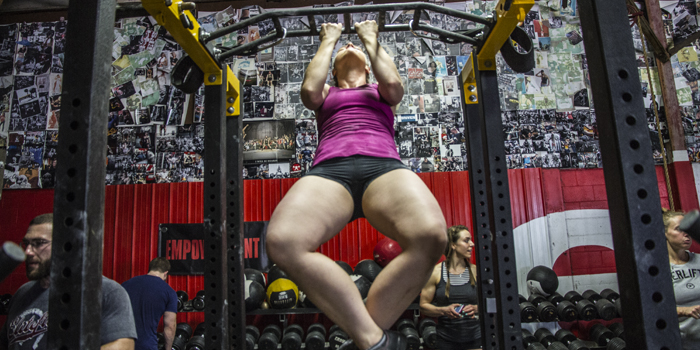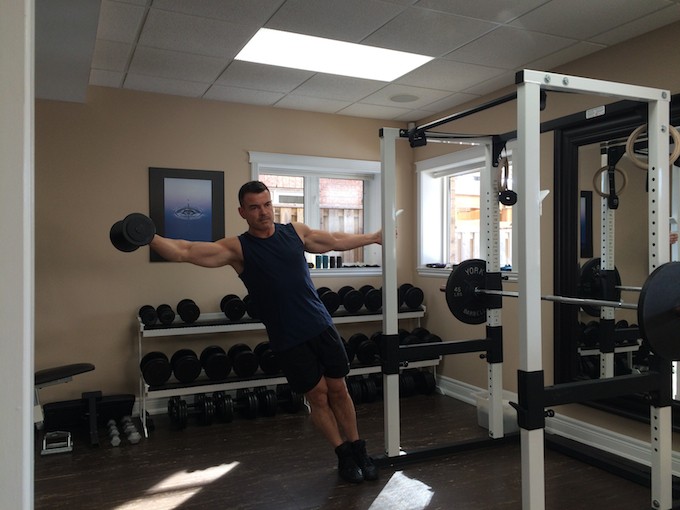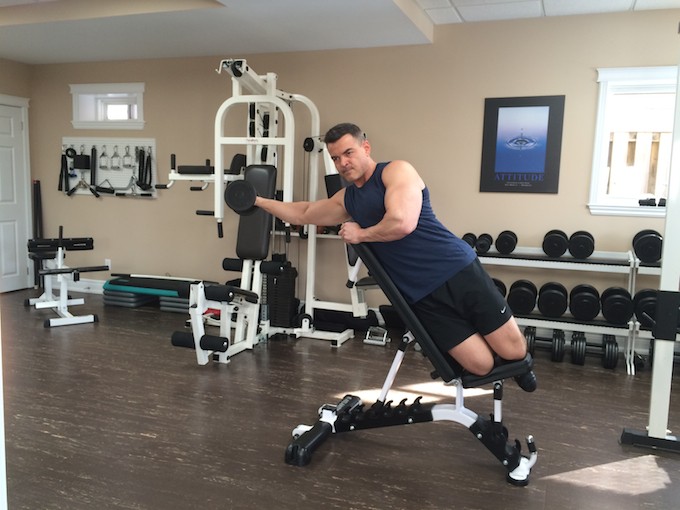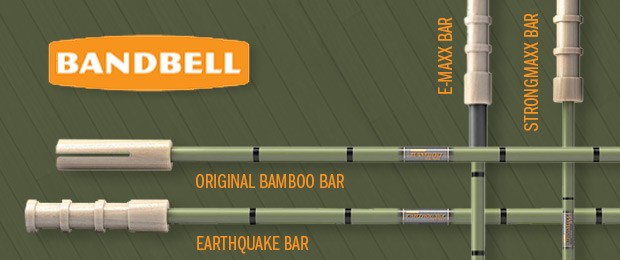
In life, business, and training, the rule is simple: prioritize what’s important, get rid of the rest. No one wants to waste their time in the gym. Get in, do what you need to do, and get out! Ask any seasoned lifter what’s important and they’ll tell you to squat, deadlift, press, and pull.
RECENT: The Alternating Conjugate Periodization Model
Every program should contain some form of those compound movements where heavy loads are used and multiple joints come into play. After the “big rocks,” you need to fill some of your training time and effort with “pebbles” — the weak links that are going to make those movement chains stronger and your physique better balanced. These are typically single-joint, isolation movements that target proximal muscles of the upper and lower limbs. The “sand” exercises are reserved for specialization — one or two exercises for aesthetic purposes to improve muscle balance and symmetry, strength purposes to bring up the weak link of the chain, or conditioning purposes to strip off a layer of fat (or to simply make it up a flight of stairs without keeling over).
Big rocks followed by pebbles followed by sand — that’s what your training should consist of. Here’s what it looks like:
Big Rocks (A1):
- Front/Back Squat
- Bent-Knee Deadlift
- Standing/Seated/Lying Press
- Chin-Up/Pull-Up or Row
Pebbles (A2):
- Elbow/Knee Flexion and Extension
Sand (B):
- Wrist/Ankle Flexion and Extension
- Shoulder/Hip Prehabilitation Exercise
- Core-Based Movement
- Lagging Muscle
- Conditioning
Program Sample
Here’s an example of what it looks like in the gym:
Day 1
A1. Back Squat
A2. Mid-Incline Dumbbell Curl
B1. Lean-Away Dumbbell Lateral Raise
B2. One-Leg Calf Raise
Day 2
A1. Wide-Grip Pull-Up
A2. Lying Leg Curl
B1. Lean-Away Dumbbell Lateral Raise
B2. One-Leg Calf Raise
Day 3
A1. Bent-Knee Deadlift
A2. Seated EZ-Bar Triceps Extension
B1. Lean-Away Dumbbell Lateral Raise
B2. One-Leg Calf Raise
Day 4
A1. Close-Grip Bench Press
A2. Seated Leg Extension
B1. Lean-Away Dumbbell Lateral Raise
B2. One-Leg Calf Raise
Basically, you have a squat paired with an arm curl, a pull-up paired with a leg curl, a deadlift paired with a triceps extension, and a bench press paired with a leg extension. Alternating the heavy demanding big rocks with lighter, non-competing pebbles will help you manage fatigue and get more work done by the end of the day. Following those main exercise pairs, you have a pair of exercises that are repeated every workout that focuses on lagging body parts. In this case, you have the shoulders (medial deltoid) and calves (gastrocnemius).
Sounds like a simple plan, but don’t be fooled! Once we get into the nitty-gritty, you’ll see there’s quite a bit built into it. The key concepts of autoregulation and variable adaptation are what set this routine apart from others and will ensure constant results over the long haul.
Autoregulation Trumps an Arbitrary Approach
Set the frequency to four days a week and stick to it. For most individuals, training once a week is useful for maintenance only. Twice a week is good for strength gains but leads to no significant morphological changes. Three to four times is ideal for muscle strength and size gains. Five or more days will lead to diminishing returns. You can train on Monday, Tuesday, Thursday, and Friday if you wish to keep your weekends free, or train on Saturday, Sunday, Tuesday, and Thursday if weekends work better for your schedule.
With this system, you have assigned workout days and times — they don’t need to change. What will change is the number of sets you do for the major “A” movements. The day will dictate that number. Here’s how it works: Most programs will assign a fixed number of sets to do, and some programs will even vary the number of sets every week (e.g., one week six sets, the next three, then one, and so on). Those are just arbitrary numbers; they’re random, and random numbers give random results. No expert should decide how many sets you should do. Your body should decide that for you.
The day will dictate the number of sets. When there’s a significant drop in performance (i.e., three reps or more from the first set), the exercise is done. That may happen after ten sets or it may happen after one set — so be it! If you do 10 reps on the first set, nine reps on the second set, and seven reps on the third set, stop there. Don’t go any further with that exercise. It’s that simple.
The “B” exercises are done to bring up lagging body parts or areas that require attention. For instance, if you look like you’re walking on pogo sticks and the tightest notch on your watch is still too loose, you’ll do calves and forearms here. If you have a history of low back or shoulder issues, this is where you’ll insert your prehabilitation exercises. If you have a lagging muscle or your conditioning sucks…well, you get the picture.
If more attention is needed for these areas, you’ll need to do them more frequently. And if you do them more frequently, you’ll need to do fewer sets, so instead of four (half-assed) sets done once a week, you’ll do just one (all-out) set four times a week. That results in higher quality training done more frequently, and that gets results! I’ll show you what I mean. Let’s say, for example, that your shoulders are narrower than an Italian street. A great exercise to broaden them up is the lean-away lateral raise. This lateral raise version will overload the top of the range, stressing more of the medial deltoid, which is exactly what you’re looking for. By the way, if you find that the other arm fatigues first, you can do the exercise side-lying on an incline bench and get the same effect.
Lean Away Lateral Raise
Side Lying Incline Lateral Raise
If you plan to do four sets of these lateral raises every week as straight sets in one workout, you’ll likely lose a rep each set. It would look something like this:
- Set 1 – 15 reps
- Set 2 – 14 reps
- Set 3 – 13 reps
- Set 4 – 12 reps
But if you did those lateral raises over four workouts instead of just one, you may actually gain a rep each set. It would look more like this:
- Day 1 – 15 reps
- Day 2 – 16 reps
- Day 3 – 17 reps
- Day 4 – 18 reps
Instead of decaying one rep per set by doing them all in one workout, you increase one rep per set by spreading them over four workouts —a 22% difference (66 reps instead of 54) in a week. I’d say that’s significant!
Follow the Cardinal Rules
Figure out what the primary goal is for each exercise and then pick an appropriate rep range to accomplish that goal. Is it strength (three to five), hypertrophy (eight to 10), or muscle endurance (18 to 20)? You can target specific fibers more directly using the guide I lay out on page 37 of my book The Elite Trainer.
To ensure success on this plan, follow these three key rules:
The Three Rep Rule
Once your performance drops three reps or more from what you did on the first set, terminate the exercise. That’s it. Done. Don’t go any further with that exercise. Trust me, if you stop there, you’ll make progress the next workout. If you don’t stop and try to push on, you’ll fail to make progress your next workout (assuming you don’t get injured in the process).
The Three Set Rule
If you did three sets or fewer the previous workout, stick with the same weight and try to do more sets. Work on volume rather than intensity. Let your body get used to the weight by doing it repeatedly before going heavier. There are many ways to challenge the body to “coax” adaptation. Piling on more and more weight every workout is not always the answer. Be smart and your body will reward you for your patience and maturity. (Remember, it’s never good to be premature — that goes for weight training as well!)
The 60-Minute Rule
Your workouts should never exceed 60 minutes. Go as long as you can for up to 60 minutes, then stop. Just because you haven’t reached a three-rep drop doesn’t mean that you should go on forever! There’s got to be a point where you stop training, and that happens around the 60-minute mark. Wrap up the “A” exercises a few minutes before that point to leave some room for the “B” exercises. If you have quite a bit left in the tank, you went too light. Make sure to go heavier next time.
Variable Adaptation for Constant Results
I’m sure you’ve heard of variable recovery, but have you heard of variable adaptation? Not everything adapts at the same rate. What happens when it’s time to change your routine? Usually, it’s a complete overhaul, but that doesn’t mean everything has adapted fully and that every exercise needs to be changed. On the flipside, some things may adapt quicker and should be changed sooner. Hanging on to some of these “stagnant” exercises for too long while trying to “force” adaptation is an invitation for injury!
When you’ve reached a peak on a particular exercise and you’re no longer able to (safely and effectively) nudge the numbers upward, change that exercise, not the entire routine! Go from a wide stance back squat to a one-and-one-quarter front squat, a snatch grip deficit deadlift to a high handle hex bar deadlift, a wide grip pull-up to a close grip chin-up, a flat mid-grip bench press to a high incline dumbbell press, an incline dumbbell curl to a seated reverse grip preacher curl, a decline triceps extension to a standing rope pressdown, a lying leg curl to a standing leg curl, a seated leg extension done with both legs to a seated leg extension done one leg at a time, etc. Even just a minor change in grip or stance width, implement diameter, or bench angle will be enough.
The magic in training happens when you listen to your body and make changes when they’re warranted. Don’t confuse that with instinctive training—you need objective rules to ensure success—and don’t let a piece of paper or a smartphone app dictate what you should do. Let your body decide that for you. Autoregulation and variable adaptation are highly effective concepts in training. Use them!
John Paul Catanzaro, BSc Kin, CSEP-CEP, is a CSEP Certified Exercise Physiologist with a Specialized Honours Bachelor of Science in Kinesiology and Health Science. He owns and operates a private training facility in Richmond Hill, Ontario. For more information, visit www.CatanzaroGroup.com.
He has just released his new book Lean and Mean: Fat-Loss and Muscle-Building Strategies for Men and Women.












Thank you for the insightful article; especially talking about being more "instinctual" with training and have your body dictate the session. I see how the number of sets is chosen based on your 3 rep rule. How are the number of reps and the weight on the first set chosen? I see you suggest choosing the reps based on the goal of the exercise (strength vs size, say). So, let's say I'm doing squat and pick 5 reps. I would want to keep doing sets until during a set I can only do 2 (or fewer) reps. If I pick my 10 rep max weight, this would be a lot more sets than if I picked my 5 rep max, which would probably only be 2 sets for me.
Anyway, thank you for the article and any additional guidance as to weight (and when to increase the weight) would be appreciated
There are two approaches that work well with this scheme:
1. Do 5 reps with a 7RM load (first workout), 6RM load (second workout), 5RM load (third workout and on). When you reach your 5RM load and you complete more than 3 sets, add 5-10 pounds the following workout.
2. Establish your 5RM the first workout by doing several warm-up sets of 5 reps and gradually increasing the load each set until the 5th rep becomes challenging. Stop there. Next workout, use that weight and follow the rules I laid out in the article. Increase the weight 5-10 pounds if you completed 3 sets or more the previous workout.
All the best,
John Paul Catanzaro
Thank your for this article. I really enjoyed the content. The concept of autoregulation is intriguing. But I like the idea of variable adaptation even more.
This concept makes any training template a blueprint. Would you say the B exercises have to be adjusted more by what is "behind" instead of exchanging it for similar ones (as it would be the case for A?
All the best,
Stefan